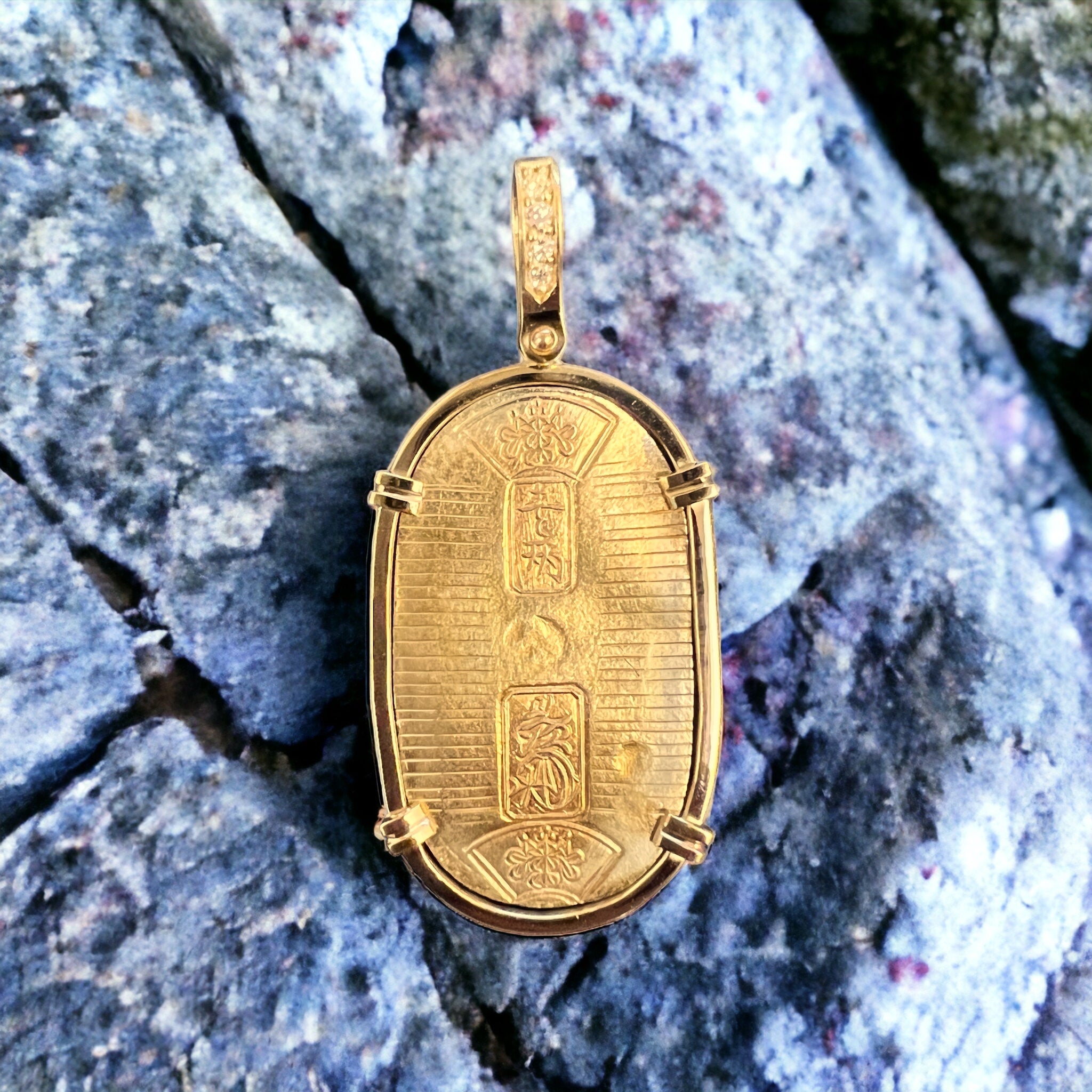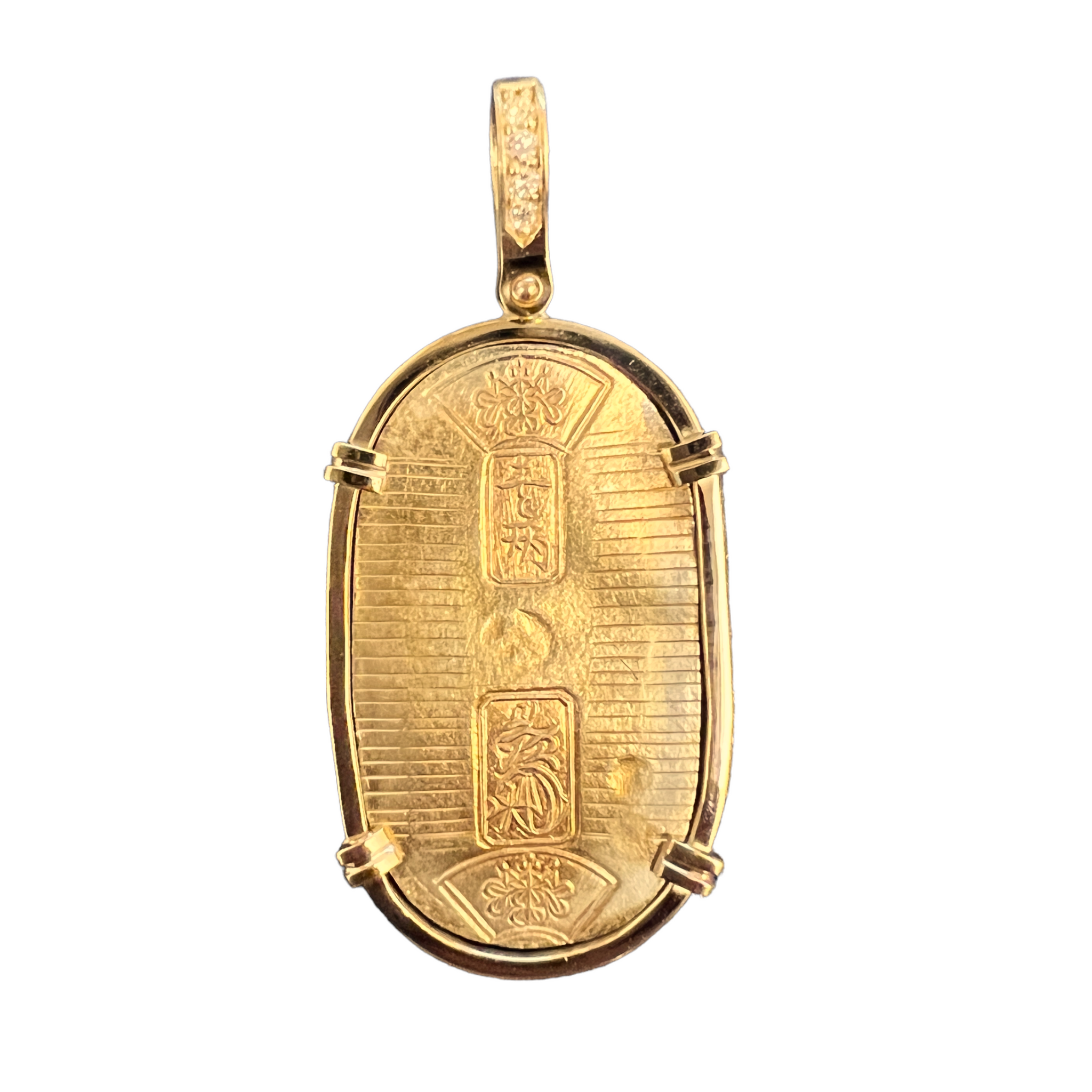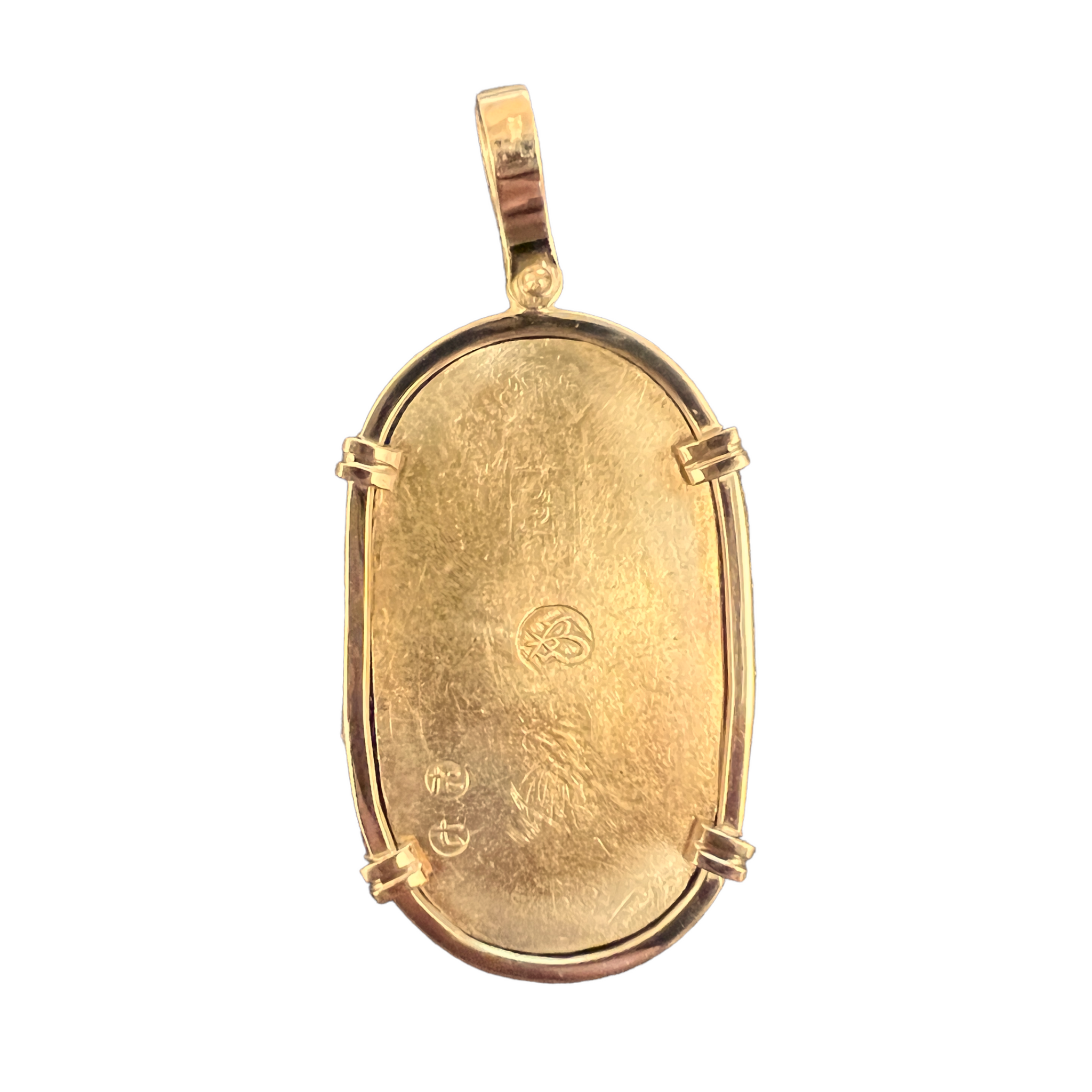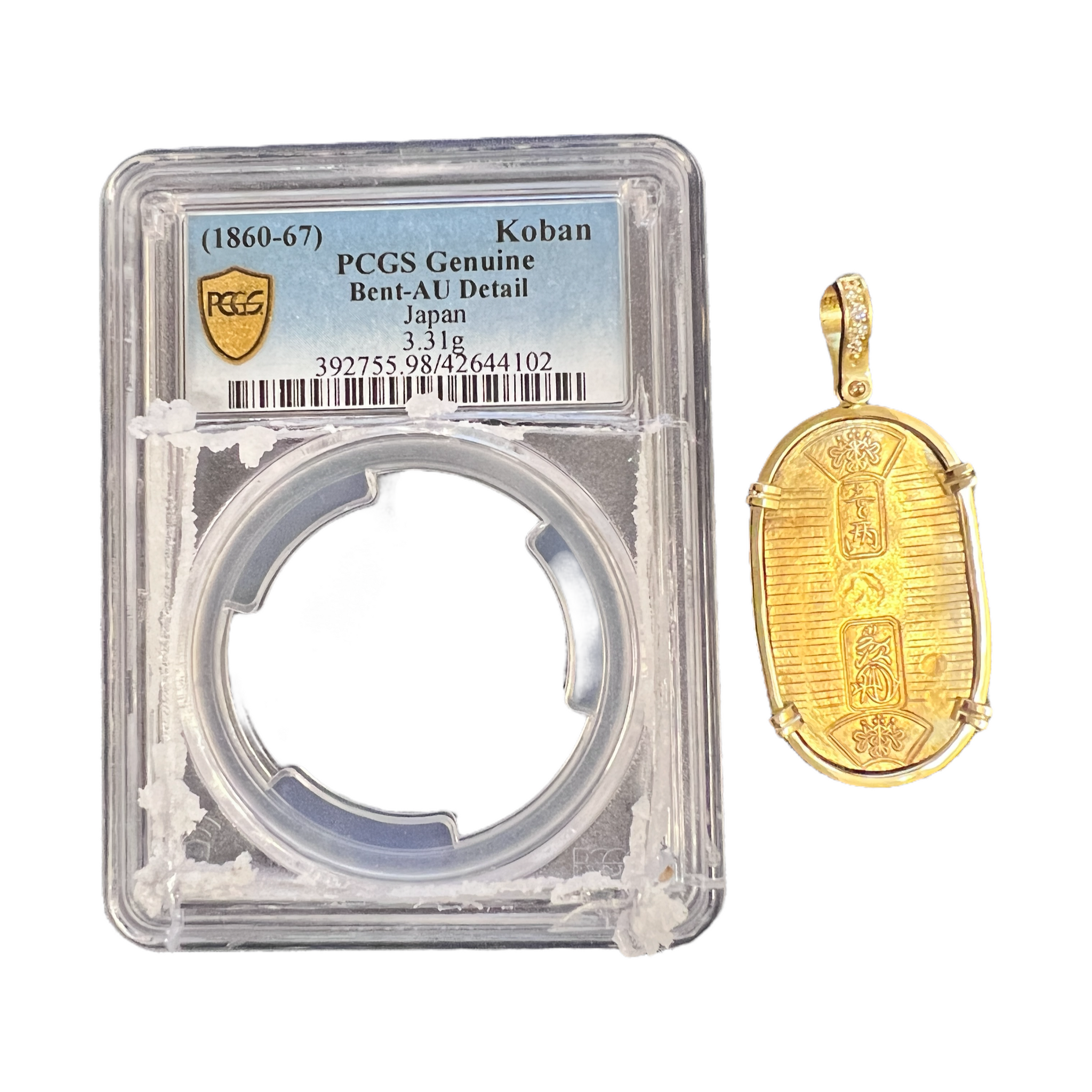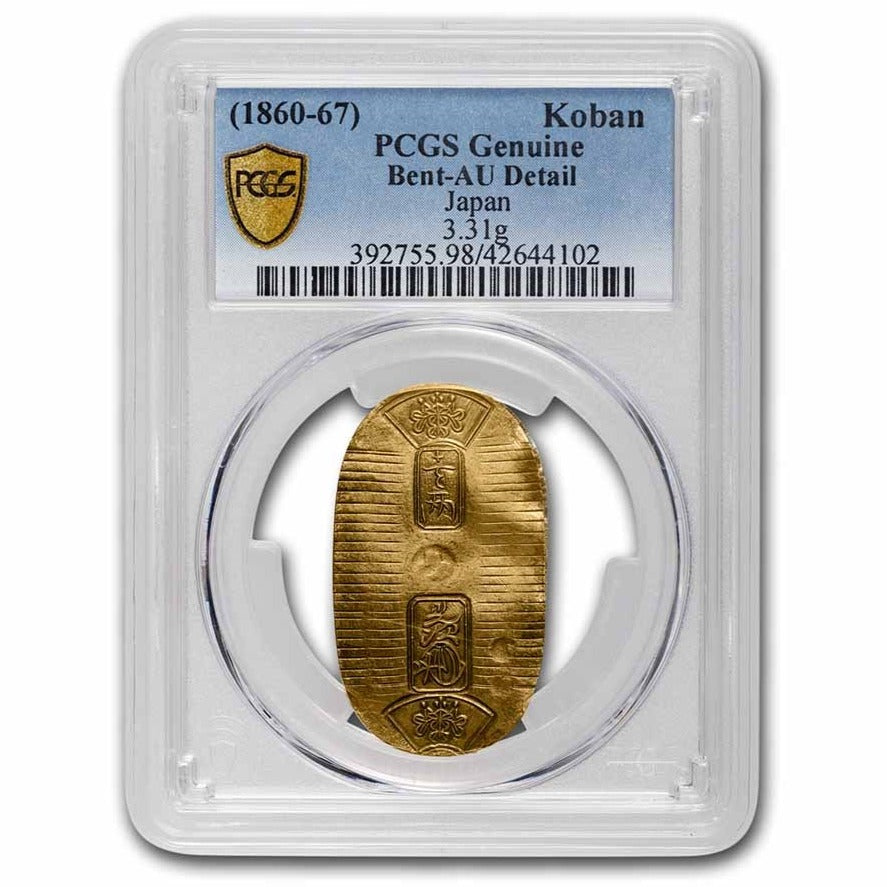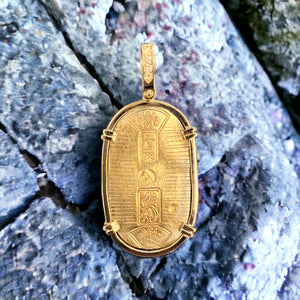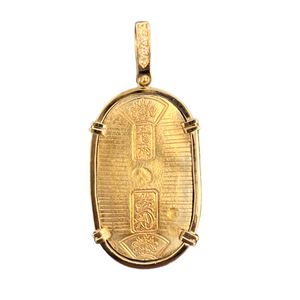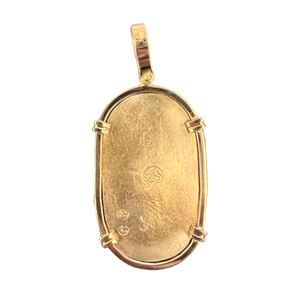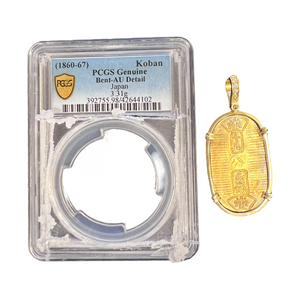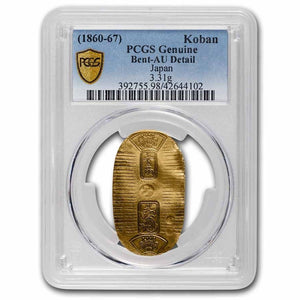Japan Koban Gold Coin Mounted in 18k Yellow Gold
$6,787
Region: Japan
Denomination: Koban
Date: Edo Period (1860-1867)
Weight: 3.31g
Grade: PCGS - 42644102 Genuine bent AU details
Mount: 18K gold – Accented with .10 ct of diamonds on the bale
Description: Obverse legend: Standardized design with two rectangular and two floral stamps. Reverse legend: 2 authorization stamps. Reverse description: Floran symbol at center.
History: The koban (小判) was a Japanese oval gold coin in Edo period feudal Japan, equal to one Ryō, another early Japanese monetary unit. It was a central part of Tokugawa coinage.
The Japanese economy before the mid-19th century was based largely on rice. The standard unit of measure was the koku, the amount of rice needed to feed one person for one year. Farmers made their tax payments of rice which eventually made its way into the coffers of the central government; and similarly, vassals were annually paid a specified koku of rice. The Portuguese who came to Japan in the 1550s, however, preferred gold to rice; and the koban, which was equal to three koku of rice, became the coin of choice in foreign trade.
The Keichō era koban, a gold piece, contained about one Ryō of gold, so that koban carried a face value of one Ryō. However, successive minting’s of the koban had varying (usually diminishing) amounts of gold. As a result, the Ryō as a unit of weight of gold and the Ryō as the face value of the koban were no longer synonymous.
Japan-6777

